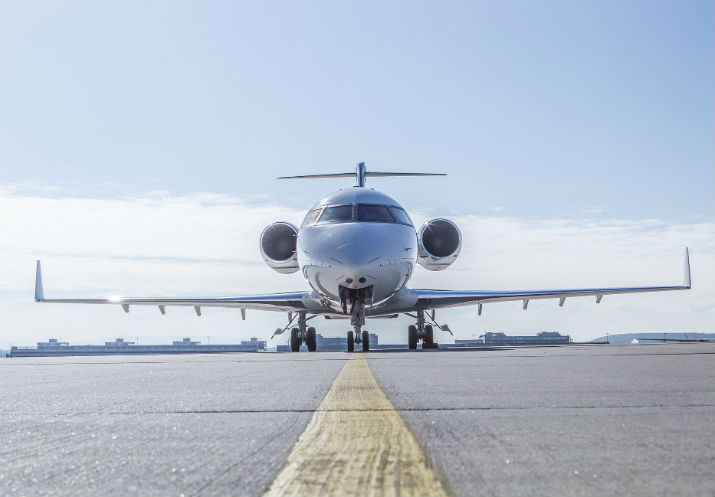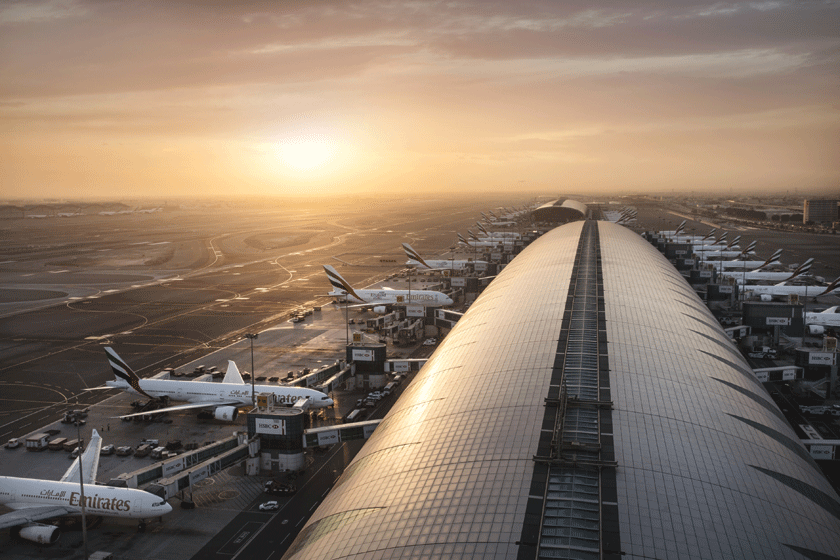
Middle East Aviation Market

Dubai International Airport (DXB) is the region's largest port and hub for Emirates. In the foreground is the T3 terminal belonging to the line, the largest building in the world by area at the time of completion, covering 1,7 million m².
The 17th edition of the Dubai Airshow was the first mass international aviation event to take place since 2019 and the largest cyclical event organized under that name since 1989. The exhibition brought together 1200 exhibitors, including 371 new ones, from 148 countries. The two-year break in the organization of trade fairs in the world, due to well-known reasons, has raised great hopes and expectations, especially among observers of the civilian market. For this reason, the Dubai Airshow was seen as a barometer of commercial aviation sentiment and trends, with bookings reflecting the industry's return to pre-pandemic levels.
Indeed, during the event, orders and options for more than 500 vehicles were collected, 479 of which were confirmed by contracts. These results are significantly better than the results obtained at the exhibition in Dubai in 2019 (less than 300 aircraft), which gives grounds for cautious optimism. In terms of transaction numbers, previous editions of the event have been dominated by Middle Eastern carriers, and last year only two airlines from the region were interested in new projects (a letter of intent from Jazeera Airways for 28 A320/321neos and Emirates for two B777Fs).
Dubai Airports: DWC and DXB
The venue for the Dubai fair, Al Maktoum International Airport (DWC), also known as Dubai World Central, is a perfect example of how the overall boom in the air travel market affects the development of just one airport. Al Maktoum International Airport, located 37 kilometers southwest of downtown Dubai (and a few kilometers from Jebel Ali Seaport), is believed to be an additional port for Dubai International Airport (DXB). In 2007, the only DWC runway to date was completed, and in July 2010, cargo flights were opened. in October 2013 Wizz Air and Nas Air (now Flynas). The DWC was supposed to have six 4500 m runways, but this was reduced to five in 2009. The configuration of the runways will allow four aircraft to perform landing approaches simultaneously.

World Dubai Central (DWC) was planned to be the largest airport in the world, capable of handling more than 160 million passengers a year. A separate exhibition infrastructure has been created on its territory - since 2013, the Dubai Airshow fair has been held here.
The entire complex of Dubai World Central, of which the airport is a key element, covers an area of 140 km2 and will include, among other things, a special free trade zone, shopping, logistics, leisure and hotel centers (including 25 hotels) and residences, three passenger terminals, cargo terminals , VIP-terminals, service bases (M&R), fair, logistics and scientific centers, etc. The port itself, with a capacity of 160-260 million passengers a year and 12 million tons of cargo, is expected to be the largest facility of its kind in the world. The entire complex will eventually provide jobs for a total of 900 people. According to initial assumptions, the Dubai World Central complex was to be fully operational from 000 and would eventually be connected to the DXB port via a hyperloop.
Meanwhile, the financial crisis that began in 2008, caused by a decrease in demand for real estate, suspended ambitious plans for the development of the project until at least 2027. It is worth adding that, contrary to appearances, the main sources of Dubai's influence are not oil production - about 80 percent. deposits of this raw material are located in another of the seven emirates of the UAE - Abu Dhabi, as well as in Sharjah. Dubai receives the greatest profit from trade, tourism and rental of real estate, where the market for this type of service is significantly saturated. The economy depends on foreign investment and broadly understood "capital transactions". Of the 3,45 million residents of Dubai, as many as 85 percent. emigrants from almost 200 countries of the world; an additional several hundred thousand people work there temporarily.
A small number of goods produced locally and a heavy dependence mainly on foreign labor (mainly from India, Pakistan, Bangladesh and the Philippines) make Dubai's economy very vulnerable to external factors. Dubai Airports, operator of DWC and DXB ports, is optimistic about the future. Dubai is one of the most visited cities in the world - the metropolis received 2019 million tourists in 16,7 alone, and the location of both airports makes them ideal transit ports. A quarter of the population lives within a 4-hour flight, and more than two-thirds live within an 8-hour flight from Dubai.
Thanks to its convenient location and systematic development, in 2018 DXB became the third largest airport in the world after Atlanta (ATL) and Beijing (PEK), serving 88,25 million passengers and 414 thousand passengers. takeoffs and landings (fourth place in 2019 - 86,4 million passengers). The airport has two runways, three passenger terminals, one cargo and one VIP. Due to growing airport capacity issues, it has been decided that Dubai International Airport, Emirates' daily hub, will additionally serve only the largest wide-body vehicles of other carriers.
In an effort to offload DXB traffic, it was planned in 2017 that Flydubai (a low-cost airline belonging to the Emirates group) would move a significant part of its operations to Dubai World Central, which would also serve the operations of other companies. These are temporary solutions, as eventually DWC will become the main base of the largest carrier in the region - Emirates. As airline president Sir Timothy Clark emphasized, the redistribution of the hub is not a matter of discussion, but only a matter of time. Meanwhile, in May last year, DXB airport received 75 percent of passengers. lines operating in 2019, and the number of passengers served reached 63 percent. before the pandemic. Dubai International Airport predicted 2021 million travelers were due to pass in 28,7 and should reach 2019 results in three years.
In the wake of further problems associated with the slowdown in the economy of the United Arab Emirates in 2018-2019, the deadline for completion of the Dubai Central complex was once again postponed - at some stage the project was planned to be finalized even in 2050. In 2019, the DWC handled just over 1,6 million passengers traveling on board 11 airlines, although its capacity at that time was 26,5 million passengers per year. And although it was announced a few years ago that 2020 million passengers would pass through Al Maktoum in 100, two years ago, due to the pandemic, the airport was closed for work. In practice, the possibility of receiving about a hundred A380 class vehicles on the platforms was tested. At the peak of the pandemic, more than 80 Emirates-owned aircraft of this type were parked at DWC, with a total of one hundred and dozen owned by the carrier (2020 Airbus A218s and Boeing 380s in April 777). , i.e. more than 80% of the airline's fleet was stored in DWC and DXB).